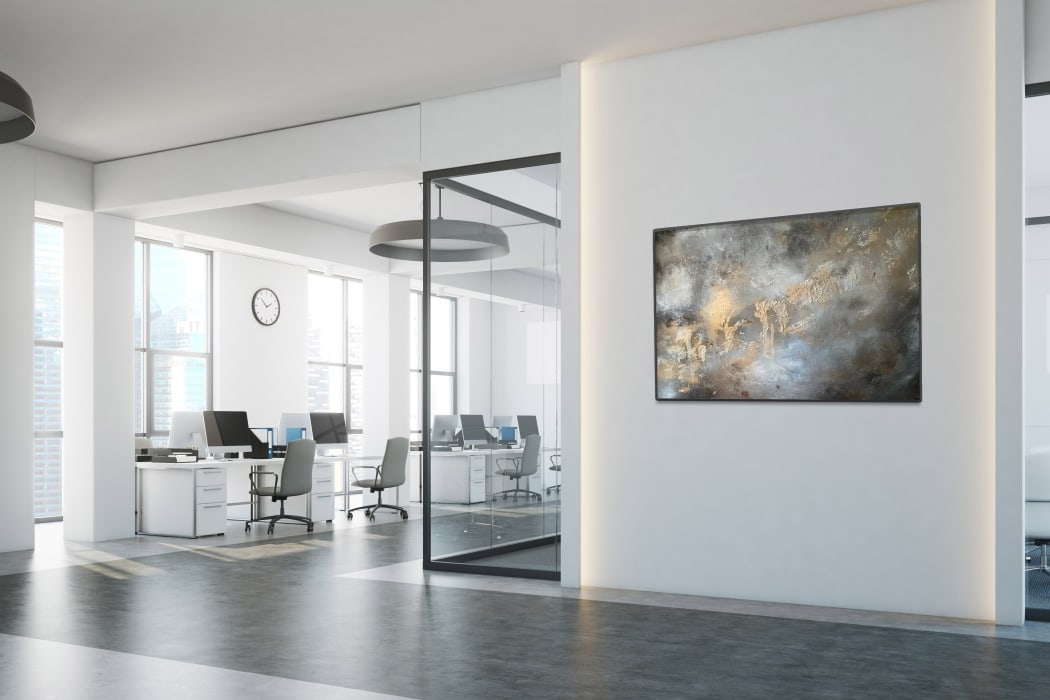
Showcasing art in the workplace can boost employee performance, the frame of mind, and physical well-being.
A significant amount of research studies administered in the past years have recognized countless ways — from the pragmatic to the unintentional — that positioning carefully-chosen art in the place of work can improve employee experience and accomplishment and assist in delivering the correct message to visitors.
Workplaces can frequently feel like a labyrinth of desks, hallways, and doors. Due to the fact that our brains clasp onto notable setting features, art can regularly result as an indicator, helping people going through the space to recollect where they’ve been. It can also come in convenient when giving directions.
Among numerous choices for conveying branding and enterprise culture in the workplace, art can help transmit crucial brand ideas in a non-linguistic way. For instance, a company that presents atypical artwork is anticipated to be perceived as administering business in fewer conventional ways or marketing fewer standard products. Art based on several cultural heritages can indicate multicultural operational practices and a more diverse pool of employees.
Furthermore, while work environments can often feel like a world of its own, art in the workplace can present as an outlet for drawing attention to regional culture and community, creating a cross over between the workplace and its surrounding area. Prestigious corporate collections frequently highlight local artists and exemplify immediate reference to the cultural setting.
Employees manifest the most awareness to detail, process and carry-on information best when their workplaces both showcase art and have authorized input into its choice and positioning.
Art's part in employee stress, health, and accomplishment.
Similar to its curative influence in hospitals, art in the workplace has also been shown to help employee well-being and performance. This is remarkable, as the office can easily become a place of anxiety and tension, and people become drained after long periods of work. Observing artwork, especially life-like landscapes, benefits workers re-establish cognitive power and decrease some of the stress.
Individuals who work in environments filled with visually appealing art experience less anxiety and irritation in reaction to work-related discouragement and this can help to set up a more united and pleasant workplace.
Social interaction also happens from art that initiates a discussion between employees. Whether creativity, invention and open dialogues are a part of an organization’s intended values, the location of captivating artwork can help support these values and make them accessible.
Workers are likely to be more united and open to keeping in mind different points of view when shown images they perceive as pleasing, including representation of scenes to which they feel connected — for example, an employee in London seeing a painting of the English countryside.
Art items have been shown to carry emotional worth for observers, more so than paintings, that are recognized as additions to their creators. Art objects that are positioned across the workplace and carefully curated are one approach for inspiring thinking, besides the generated interest over the work environment. Art, like nature, is outstanding in its power to transfer the viewer to a different state of mind.
Selecting the “correct” art
Deliberate art choices for the workplace will consider the content, texture, scale, and placement. Optimistic images of nature often present green grassy fields scattered with trees, a view of the skyline, seascape and water images.
Utmost positively accepted artworks have a moderate amount of visual difficulty; for instance, impressionist paintings. Art that seems too simple or too complicated is prone to have a bleak influence on mood. (the same goes for colours and patterns).
Visually pleasing and compelling images are suggested over challenging ones — viewers more often choose to feel that they understand a work of art. Hence, natural or figurative art is a more acceptable choice than abstract pieces.
Consultancies such as the ones offered at 508 Gallery can give ideas and resources for the tactical integration of art in the workplace, whether it's your home office or your company's. Together with but not limited to suggestions on what scale, texture, colour, and type of content would best present the needs of individual people and places.